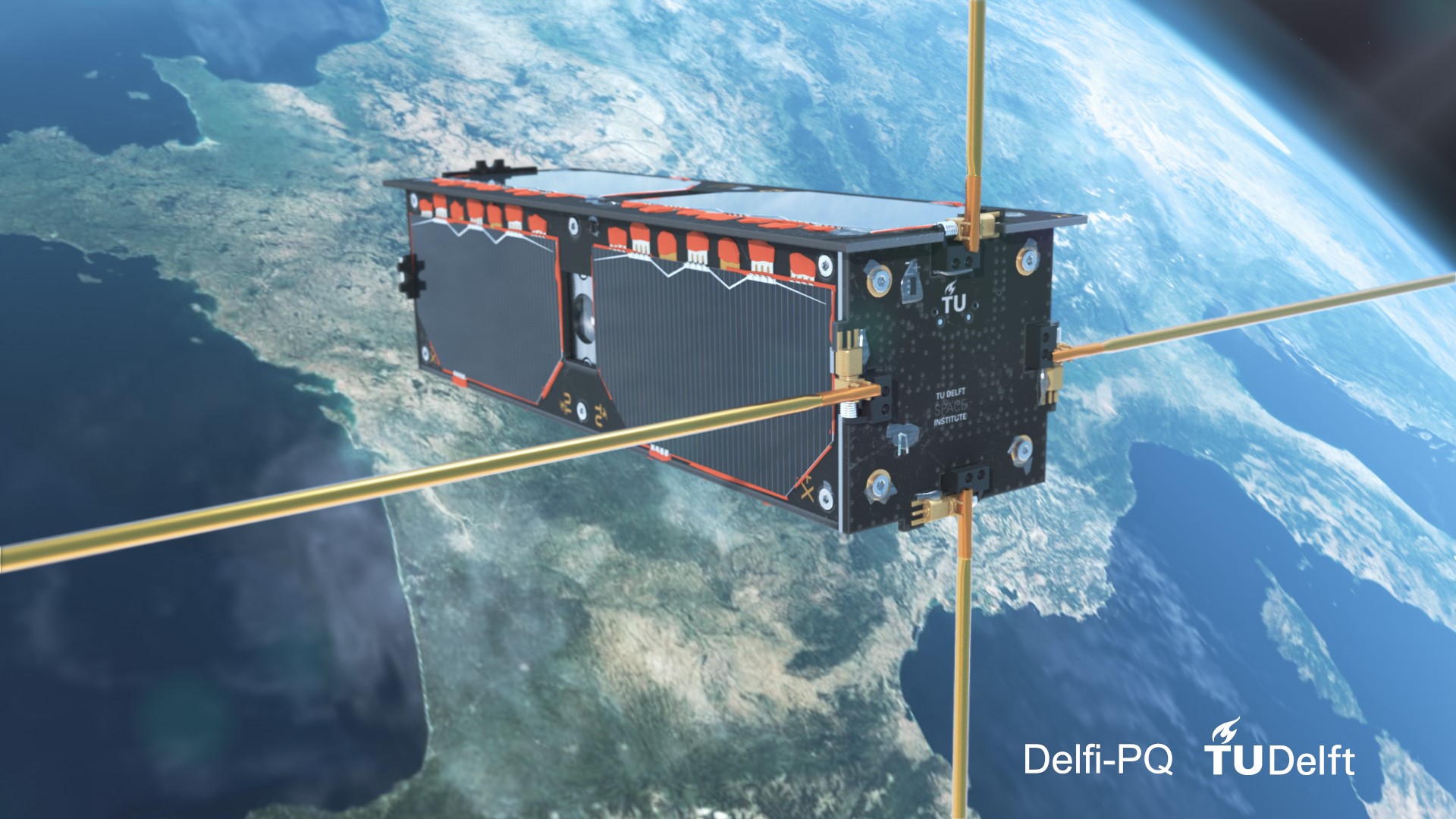Last Friday, 14 January 2022, at 11:21, Stefano Speretta and colleagues at EEMCS received the first signals from their mini satellite. The agonising wait was finally over.
Illustration: Marc Thiébaut, MLabspace for TU Delft
The launch of the SpaceX Transporter 3 from Cape Canaveral on 13 January 2022 was a routine affair. Eight minutes after launch, the first stage landed back exactly where it had left off. The rest of the Transporter climbed from an altitude of 200 to over 500 kilometres in the next 50 minutes, carrying 105 satellites to be put into orbit.
The Delft mini satellite Delfi-PQ (only five by five by 17 centimetres) was the second to be deployed. This is done from an ejector box (deployer) with a spring under tension, says Dr Stefano Speretta (Faculty of Aerospace Engineering). Together with colleagues Dr Alessandra Menicucci and Sevket Uludag, he spent years designing and building the mini satellite that was now about to enter space. With sensors in each box, the flight controllers can see whether a load has been deployed.
Falcon 9 Transporter 3 on Youtube
One hour after the launch the moment of truth has come. At an altitude of 522 kilometres, the packages are deployed about 30 seconds apart. The TU Delft team watches the livestream intensely. Flight control reports the mission and adds ‘separation confirmed’. Delfi-PQ should have been called at minute 59:56. Speretta hears the confirmation of the first mission and after a while the third mission. What about number two? Their own Delfi-PQ? Did it get stuck? That can’t be true, can it?
Quite a lot depended on it for the TU Delft researchers. They started designing and building their mini satellite in 2016. They wanted to investigate whether it is possible to make earth observations with such small (and relatively cheap) satellites. Preferably in a swarm of communicating mini satellites.
Antennas, sensors, power supply, micro propulsion system, reflectors, and a communication system – everything had to fit into the size of a spectacle case.
But once they finished building in 2018, the launch failed time and again. One time due to bankruptcy, another time because they didn’t get permission. Hassle. Until SpaceX’s Transporter 3 mission offered a solution. Finally, on 13 January 2022, their mini satellite went into space after all. But the uncertainty continued. Had Delfi-PQ actually been deployed? Was the little one coming to life?
Listening to satellites is tricky because they only rise above the horizon for a few hours a day, and then there is only a limited period of time for each one to pass over. Usually about three times before they disappear behind the horizon. So the researchers listened from the ground station on the EEMCS building at 19:00. Nothing. 19:30. Nothing. 23:00. Still no signal. It was going to be a restless night.
The next morning, Friday 14 January 2022, there was an online post from Vietnam. A university there thought they had heard the Delfi-PQ because in terms of location and radio frequency, Delfi-PQ was close to their own mission. That started well.
At 08:30 the next transit took place. The researchers pricked up their ears. There was a signal, but it was too weak to be sure that it came from Delfi-PQ. The uncertainty continued, but there was hope.
The second transmission, at 11:15, brought an end to the tension and uncertainty. The signal was strong and they recognised the Delfi-PQ identifier. Redemption at last. Speretta, Menicucci and Uludag could go into the weekend with relieved minds.
Do you have a question or comment about this article?
j.w.wassink@tudelft.nl


Comments are closed.